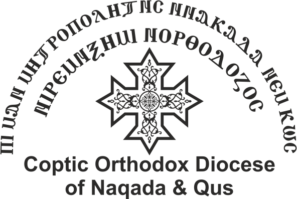Saint George, the Great Martyr Monastery
known as “Al-Magmaa”
Location:
Al-Magmaa monastery dates to the 5th or 6th century and was flourishing with monks until the end of the Fatimid era. It is located 10 km southwest of Naqada, on a 6-meter-high sand hill which allowed it to overlook the scattered monasteries in the desert. It has four churches in the name of St. Mary, Archangel Michael, St. George, and St. John the Baptist, the first two of which were destroyed. St. George church which is currently in use was built fifty years ago and has four altars. The monastery is under the auspices of His Holiness Pope Tawadros II and is supervised by H.G. Bishop Beimen. Researchers believe that it is one of the most important monasteries of Upper Egypt in terms of its location, space, as well as architecture.
This monastery was named Al-Magmaa due to its unique location in the wilderness of Al-Assas among lots of monasteries around it from north and south. This unique spot enabled the monastery to be the meeting place for all monks to pray the liturgy as well as to operate as the main storage of all the surrounding monasteries’ needs. Also, St. Anba Besentaous, the Spirit Bearer who acted as the spiritual father of all the wilderness monks often resided in it.
Excavation season:
Because of the importance of this monastery, the Supreme Council of Antiquities, after a scientific study of the horizontal planes of the monastery was able to locate the Church of the Virgin Mary and started the excavation to uncover this church on 1/3/2003.
During excavation, they discovered four gold dinars and two half dinars, one of which dates back to the year 77 AH, which is the beginning of the Arabization of the dinars.
Excavation continues to complete the discovery of St. Mary church and some of the monastery’s cells.
The monastery was restored by H.G. Bishop Beimen and under the supervision of the Antiquities Authority in 2020. During the restoration process, a storeroom was discovered under the southern part of the church where altar pots, Mass offerings and sacred oils were stored.



















